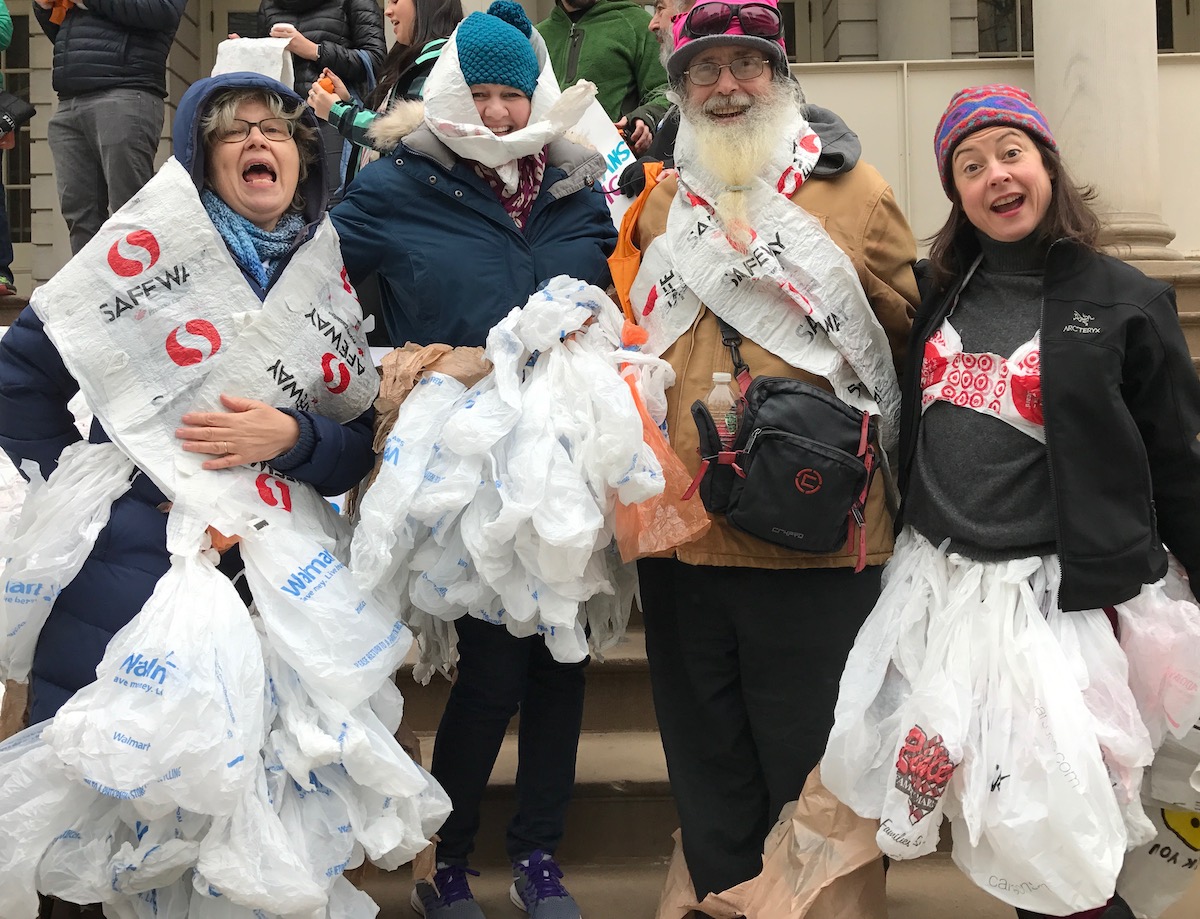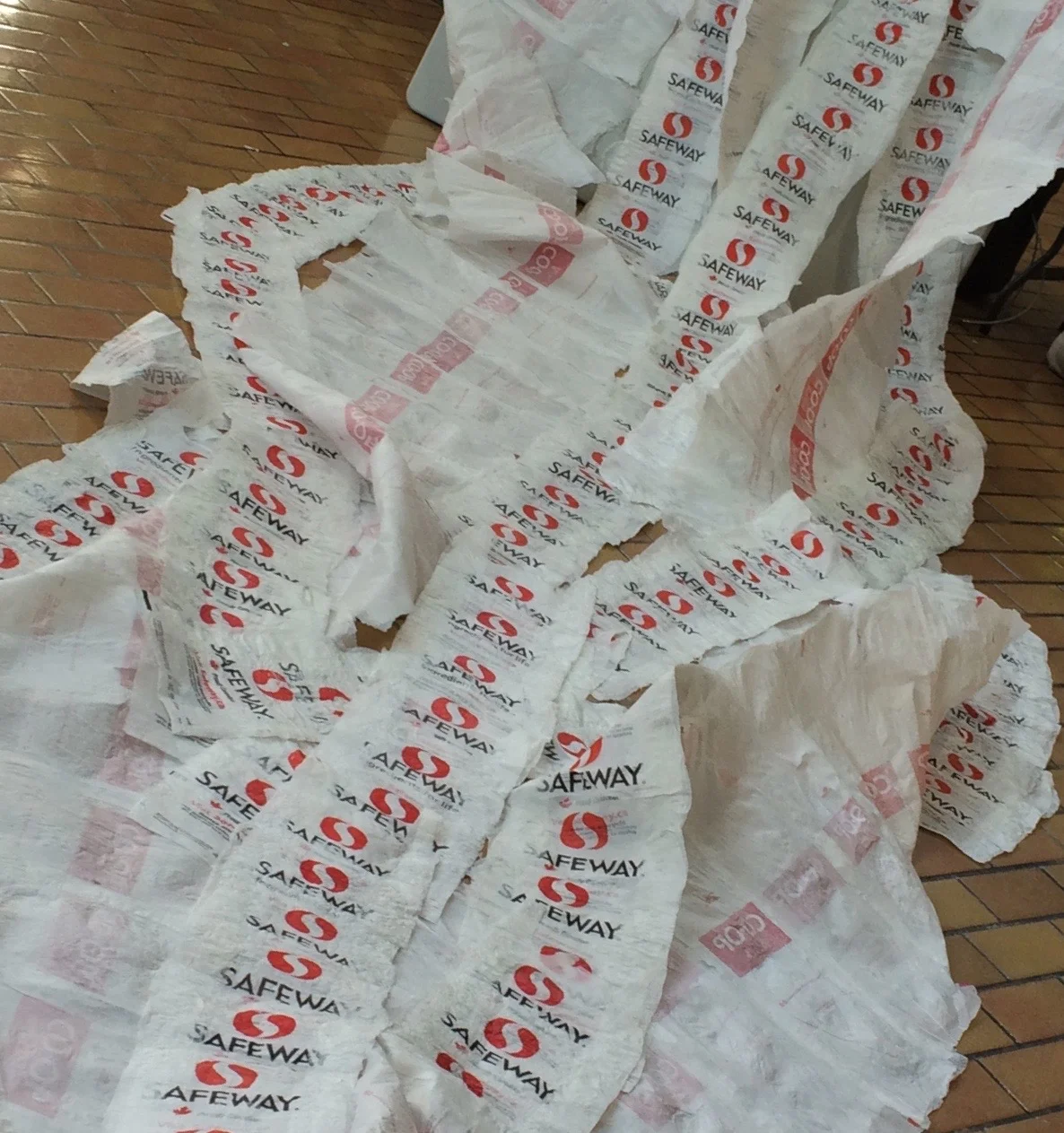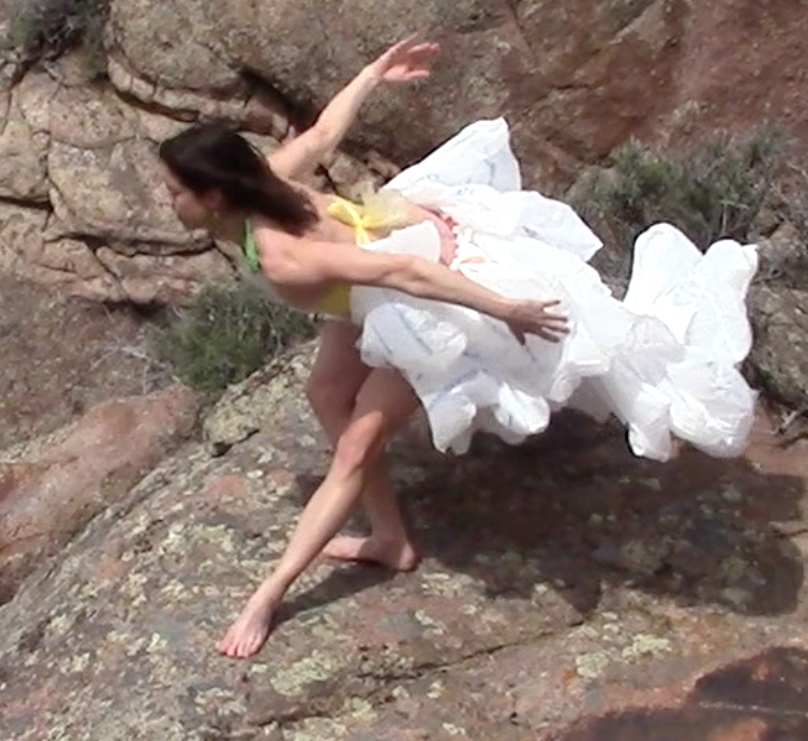I have an obsession with plastic. This is not breaking news, but if it is to you, watch this short video to find out why. I landed on bags as a focus material in 2015 after discovering that they, for the most part, don’t get recycled, despite the false advertising of collection bins placed in stores with the triangular chasing arrow symbol that leads us to believe they are. Prior to this point, I hadn’t paid much attention to specific laws, unless women’s reproductive rights were coming under attack, and even then, I didn’t call my elected officials, much less pay attention to legislative cycles.
At first I was interested in bags as a raw material – what could I do artistically with them while keeping them out of a landfill. I discovered fusing techniques using an iron and was off to the races experimenting. That fall of 2015, I was in residence at the Alberta College of Art and Design. Prior to my arrival, a call went out to the community to bring in bags. I was nervous that none would materialize, so I shipped myself a box of bags that I’d collected over the years. Within days of my arrival, and much to my dismay, thousands upon thousands of bags had appeared. Safeway, a grocery chain in Canada, were the most plentiful. The irony of which was not missed; plastic bags are not a safe way for the future of the environment. The visual impact of so many bags made an impression and became the focus of conversations, with many individuals remarking that they were going to begin to bring their own bags to the supermarket.
Safeway bags fused together creating a cascade of flowing plastic.
I became involved politically in the fight to ban plastic bags in New York following the fiasco that occurred in 2016. New York City Council passed a bag bill only to have it blocked at the state level. You can read more about that here. To be honest, what prompted my getting involved was a bit of egotistical New York City independence. How dare Albany tell us what we can and cannot do. So, I jumped onboard with BagItNYC, working at the local level, and the New York State Plastic Bag Coalition, working at the state level.
Bag facts
Want to know some staggering facts about bags. Watch this!
A petition campaign was started by the coalition and at Artichoke performances, always featuring plastic bag costumes, I’d announce the campaign and pass petitions through the crowd. People were more than happy to sign, often thanking me for doing this work. From having tried to gather signatures at farmers markets in the past, this was by far a lot more efficient. By the time we went to Albany to deliver them on June 6, 2018, we’d gathered thousands of signatures in support of a comprehensive bill. I brought along plastic bag costumes and outfitted several coalition members for the press conference, which created a splash that got us onto the local television network.
The bill didn’t pass that session. But one thing that stuck with me from my Albany visit was a conversation with a local Assembly member where he informed me, “I get calls all the time from people who are irate about a plastic bag ban. A constituent called the other day asking, ‘What am I going to use to pick up my dogs’ poop if this bill passes?’. I don’t get calls like that from people who want them gone, so you’ve got to get better at that.”
A plastic bag ban passed in New York State this April, making New York the 3rd state in the nation with a plastic bag law, behind California and Hawaii. While the petitions and visits had an impact, uniting behind one bill, as opposed to three that were introduced in 2018, and pushing elected officials with phone calls, produced the win. New York City has also since adopted a 5 cent fee for paper bags to ensure that folks don’t just switch to paper, which has its own carbon footprint. After the bills passed, a neighbor stopped me and said earnestly, “all that dancing in plastic bags worked.”
Genna Mergola and Shawn Brush performing at the EcoCity Pageant on the Lower East Side of New York
Though it took the political work with a coalition to bring about a legal change, the visual impact, conversation starters, media elevation, and ability to reach more people that my artistic work had is what people remember. This has got me thinking about art’s effective influence on public perception.
I thought the passing of legislation would close this plastic bag cycle, but in speaking with Mark Caserta, head of the Fifth Avenue Business Improvement District (BID), he informed me that many shop owners won’t comply with the law once it comes into effect in March 2020, or even know about it, until someone is slapped with a fine. “Then everyone will be up in arms and scrambling and my phone will be ringing off the hook”, he predicted. I had never considered how my local bodega would make the transition, or that there would be more to do. So, now I’m working with my local (BID) and 350Brooklyn to educate storeowners about the law and to help make the transition to a bag reduced New York City more seamless. We’ll be making a splash with costumes at upcoming summer strolls, having conversations with local store owners and managers, and working with a network of BIDs this fall on information campaigns.
Like all environmental issues and artistic journeys I’ve been involved in, things get deeper and more expansive at the same time. With plastic bags, it’s my hope that the advocacy needed, along with the amount of bags polluting the environment, will shrink. Until then, we’re still hitting the streets in costume.





